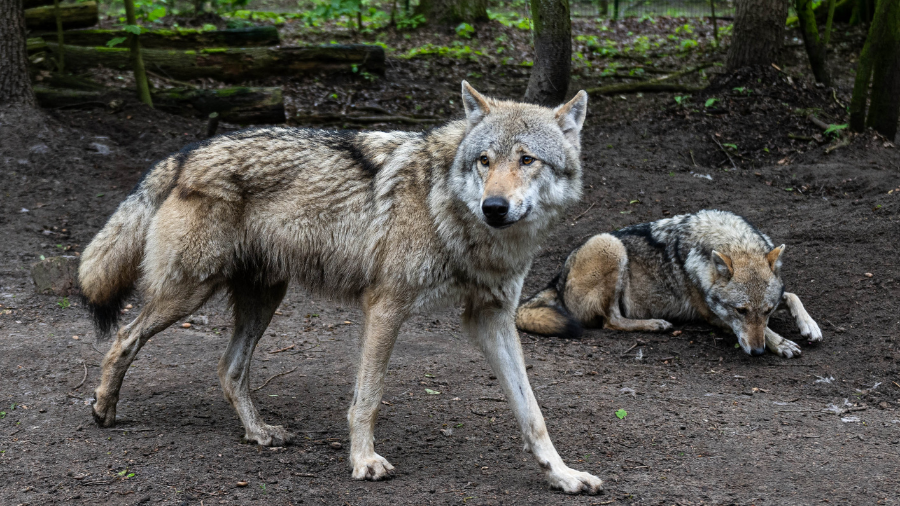Legislators consider removing gray wolves off endangered list in Wash.
Dec 6, 2023, 7:54 PM

Gray wolves roam an enclosure from the Dörverden Wolf Center. (Photo: Sina Schuldt/Getty Images)
(Photo: Sina Schuldt/Getty Images)
Washington is considering a request to lower the threshold of state gray wolves from “endangered” to “sensitive.” The recommendation is based on a healthy growth in population from near extinction in 1980 to more than 200 in 2022.
The change in status is likely to be favorable to ranchers who lose livestock to the wolves and allow more permitted killing of problematic wolves.
In a testimony Tuesday to the House Agriculture and Natural Resource Committee, Kelly Susewind, director of the Washington Department of Fish and Wildlife, gave an overview of the status and trajectory of gray wolves within the state. Susewind highlighted the significant progress made since their listing as endangered in 1980.
State record set: 21-pound mahi-mahi fish caught off Westport
Historically, Washington witnessed the eradication of wolves between the mid-1800s and the early 1900s, with sparse sightings post-1930. The species was officially listed as endangered in 1980, following a period of absence from the landscape. The reintroduction of wolves into Yellowstone in 1995 marked their gradual return, eventually leading to their presence in Washington by 2011.
Susewind detailed the state’s proactive measures, noting that in 2011, when the initial recovery management plan was established, there were five wolf packs in the state. The state is supposed to do a status review every five years, but there hasn’t been one since 1980.
As of the 2022 periodic status review, this number of wolf packs had soared to 37 packs, comprising approximately 216 wolves. The population growth has been monitored annually since 2008, with an average annual increase of slightly over 20%.
Geographically, the delineation between federal and state listing is demarcated by a red line, with wolves to the west listed federally and those in the eastern part of the state classified as endangered under state law.
More state wildlife news: Washington reinstates kill order for Togo wolf pack after a series of cattle attacks
Susewind emphasized the wolves’ conservation status, pointing out that while they are not federally listed east of the red line, they remain classified as endangered under state law. The state’s 2022 review highlighted the progress made, suggesting a shift in classification from endangered to sensitive.
This reclassification aims to acknowledge the considerable recovery while maintaining vigilance and support for further population expansion.
The proposed reclassification to “sensitive” would not permit non-tribal hunting, reflecting the state’s continued commitment to a recovery mode and coexistence efforts. Susewind emphasized the unchanged goals of minimizing livestock losses and wolf removals, with a focus on coexistence strategies.
More from Matt Markovich: Checks are out to 400,000 Wash. households from $40M price-fixing settlement
Differences in penalties were outlined, indicating that illegally killing a wolf under the endangered classification could incur a $5,000 fine and up to a year in prison, while under the sensitive classification, the penalty would be a $1,000 fine and 90 days imprisonment. Additionally, the agency would have more flexibility in issuing permits for wolf removal under that sensitive classification.
Susewind concluded by saying that despite the substantial strides in wolf recovery, the classification as “vulnerable” stresses the need for continued comprehensive management to prevent regression. The recommendation to downgrade the status to “sensitive” aligns with the aim of promoting further colonization while upholding protective measures essential for the species’ sustained growth and conservation.













